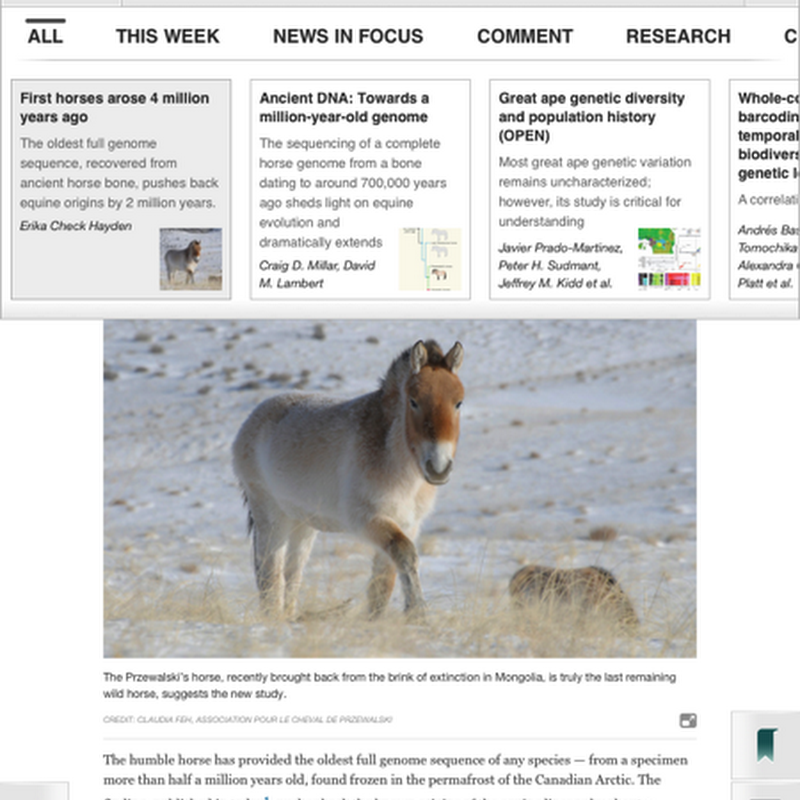Playing with my eLife Lens-inspired article viewer and some recent articles from ZooKeys I regularly come across articles that are incorrectly marked up. As a quick reminder, my viewer takes the DOI for a ZooKeys article (just append it to http://bionames.org/labs/zookeys-viewer/?doi=, e.g. http://bionames.org/labs/zookeys-viewer/?doi=10.3897/zookeys.316.5132), fetches the corresponding XML and displays the article.Taking the article
iPhylo

Quick note to highlight the following publication: This paper outlines the methods used by the BOLD project to cluster sequences into "BINS", and touches on the issue of dark taxa (taxa that are in GenBank but which lack formal scientific names). Might be time to revisit the dark taxa idea, especially now that I've got a better handle on the taxonomic literature (see BioNames) where the names of at least some dark taxa may lurk.
Here's a sketch of my vision of how to make something like the original PLoS Hubs vision (see The demise of the @PLoS Biodiversity Hub: what lessons can we learn? for background). In the blog post explaining the vision behind PLoS Hubs (Aggregating, tagging and connecting biodiversity studies), David Mindell wrote:So, first up, some basic principles. The goal (only slightly tongue in cheek) is for the user to never want to leave the site.

I'm a big fan of the work Nature publishing group is doing in experimenting with new methods of publishing, such as their iOS apps (which inspired me to "clone" their iPhone app) and the Encode app with the concept of "threads". But there's an aspect of the iPad app that puzzles me: Nature's app doesn't know that a linked article elsewhere in Nature is also available using the app.

Jonathan Eisen recently wrote that the PLOS Hub for Biodiversity is soon to be retired, and sure enough it's vanished from the web (the original URL hubs.plos.org/web/biodiversity/ now bounces you straight to http://www.plosone.org/, you can still see what it looked like in the Wayback Machine).Like Jonathan, I was involved in the hub, which was described in the following paper:In retrospect PLoS's decision to pull the hub is not surprising.
One of goals of BioNames is to be more than simply another taxonomic database. In particular, I'm interested in the idea of having a platform for viewing taxonomic publications. One way to think about this is to consider the experience of viewing Wikipedia. For any given page in Wikipedia there will be links to other, related content in Wikipedia.
In browsing the GBIF classification in BioNames I keep coming across cases of wholesale duplication of taxa.

My latest tweak to BioNames is to add colour to the phylogenies. Terminal nodes with the same name are labelled with the same background colour. For example, here is a tree for fiddler and ghost crabs:The colours make it easier to see that this tree has a mixture of a few sequences from divergent taxa, and a lot of sequences from the same taxa.Note that you can now also download the SVG drawing of the tree.

In 2011 I wrote a short post about DeepDyve, a service where you could rent access to an article. DeepDyve has launched a "5-Minute Freemium" service where you can view an article online for 5 minutes, for free. You have to log in, either with DeepDyve or using Facebook, but no actual money changes hands. If you want to read for longer, or download an article then you have to get out your credit card.I've added support for DeepDyve to BioNames.

One reason I built BioNames (and the related digital archive BioStor) was to create tools to help make sense of taxonomic names.